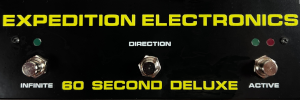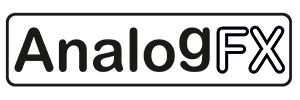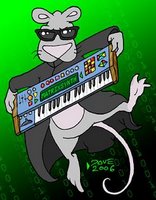Note: links to listings are affiliate links for which the site may be compensated.
via this Vemia listing
Click the auction link on top when you get there for additional listings.
"Korgs classic 800DV - has been fully serviced this year which included a complete recap of all the electrolytic and tantalum capacitors. Synth was also recalibrated at the same time. Switches and sliders were lubricated. Also has the essential dual CV/Gate/Filter upgrade for independent control of both sections of the synth. Currently set to 240v - can also be switched over to continental voltage. Nice cosmetic condition too."
Showing posts sorted by date for query Switched On. Sort by relevance Show all posts
Showing posts sorted by date for query Switched On. Sort by relevance Show all posts
Saturday, November 01, 2025
Thursday, October 30, 2025
BugBrand Introduces TCS - Touch Control Sequencer
via BugBrand (For those in the US: check on availability with Noisebug per below)
 "The 5FW design stems from ideas I used way back in the Old Blue days when I had the CTL1 Touch Panel - that design went through a few iterations during its 4 years of life, moving from just a control/preset device to incorporating some basic sequencing. Now I have taken it several steps further - expanding it out to 8 steps and increasing the control & sequencing options. The result is a powerful little hands-on sequencing hub!
It can link up with other clocking devices, especially the Sequence - indeed, I'm just beginning to investigate a joiner/expander for the pair that would allow the Control link to be easily switched on/off and also incorporate a handful of other useful functions.
"The 5FW design stems from ideas I used way back in the Old Blue days when I had the CTL1 Touch Panel - that design went through a few iterations during its 4 years of life, moving from just a control/preset device to incorporating some basic sequencing. Now I have taken it several steps further - expanding it out to 8 steps and increasing the control & sequencing options. The result is a powerful little hands-on sequencing hub!
It can link up with other clocking devices, especially the Sequence - indeed, I'm just beginning to investigate a joiner/expander for the pair that would allow the Control link to be easily switched on/off and also incorporate a handful of other useful functions.
In the meantime, the first modules are starting to ship - they can either fit in a larger system or sit in a 5FW case - perhaps an interesting addition to other banana systems!
US shipping & Tariffs:
There has been a fair bit of uncertainty because of new tariffs on shipments into the US (10% from UK vs 20% or more from most other places), alongside the ending of the De Minimis exemption for shipments under $800. Given that I send a fair amount to people in the States, these changes have proved worrying!
Thankfully I've been able to jiggle things around and have found that I can still send things easily & affordably - indeed, often including pre-payment of tariffs while not raising the overall shipping cost, and sticking with Royal Mail who have proved so reliable over many years of use.
Noisebug:
But, alongside these changes, I'm rekindling my prior work with the wonderful Noisebug store of Pomona, California. Just today I've sent a reasonable initial load - a couple of 1Frame systems, several mini-systems and a handful of red designs.
As you know, I've tended to work directly with people worldwide, but have kept in with a very few small & specific stores - Noisebug really fit the bill here for me! So if you've got requests, feel free to get in contact with them - or continue to nudge me direct ;)"
Tuesday, October 28, 2025
Craig Padilla - JOURNEYS THROUGH SPACE - Live June 1990 FULL CONCERT SHASTA COLLEGE THEATRE
video upload by Craig Padilla
From below:
This music was created without the use of sequencers; all of the background music was recorded in real-time on reel-to-reel tapes. I used a Kawai K1 synthesizer, a Siel DK-80 synthesizer, and a Roland TR-505 drum machine. A Peavey AddVerb II was also used for effects. For this show, I was loaned a portable Casio Midi Controller, which I connected to the Kawaii synth to use for the song "Destiny's Flight.""Please consider donating a much appreciated monetary tip to:
PayPal.me/CraigPadillaMusic
Notes from Craig Padilla:
This was my first public performance on June 8, 1990. It was at the Shasta College Theatre in Redding, CA, and it was my college final project for my Creative Sound Design class. Many people involved with the theater department helped out with this project.
I came from a theatrical background, and I had been used to facing the audience, which is why I performed while facing the audience during this show. My Uncle Joe saw this video and suggested that I should perform sideways so that the audience can see what I'm playing. Thanks to that advice, I've been performing that way ever since. This concert is the only time that I've performed while facing the audience.
This music was created without the use of sequencers; all of the background music was recorded in real-time on reel-to-reel tapes. I used a Kawaii K1 synthesizer, a Siel DK-80 synthesizer, and a Roland TR-505 drum machine. A Peavey AddVerb II was also used for effects. For this show, I was loaned a portable Casio Midi Controller, which I connected to the Kawaii synth to use for the song "Destiny's Flight."
Please be mindful of the visual quality of this video. It has been remastered from standard definition and upscaled to 1080p HD with audio remastered from a chrome stereo cassette tape. I am fortunate that it looks and sounds as good as it does.
The original broadcast video aired on Redding Community Access TV in 1990 and 1991. It was shot on VHS tapes from two camera angles and edited on a Super VHS tape. Unfortunately, the audio on the broadcast video was recorded from the main onboard camera microphone, which had a muddy sound. (At the time, I thought that it was better to use that audio than to have no publicity for my music.) 35 years later, thanks to current technology, the stereo audio from the master cassette tape has replaced the original audio track. It has been pitch-corrected to sync up with the video, which is something I never thought would be possible! The video was also enhanced to brighten some of the shots.
There is a small black bar on the second camera angle, and that was to cover up a graphic date that was imbedded in the video of that camera. I had decided that the black bar was less distracting than a graphic on the screen whenever I switched to that camera.
I am fortunate that I knew people who would loan me their cameras for this performance, and equally thankful to my friends who offered their time to operate the cameras!
Matt Denton, a long time friend from high school, was the main camera operator. I met Bryan Arnold while attending college. Bryan loaned me his Kawaii synthesizer for the music, and was the second cameraman who had to briefly step away to perform a song. T. Owen Smith designed the light show, and he suggested that I throw a flame out of my hand at the end of the last song. I had known Dwight Husted since high school, and he was the lighting operator who ran the light-show. My college friends, Jeff Yarnell, Karen Wodsack, and Dale Gipp, were the stage crew who also contributed the idea to use actors in body bags and dress as aliens for a song. And Dale Kilpatric helped me produce the show, and he performed with his amazing classical guitar for a song. (More people helped, and their names are listed in the end-credits of the video.)
Over 100 people attended the performance which was a benefit for the Shasta Summer Theatre Festival. I give many thanks to DJ Ron Dare for hugely promoting my music on his radio show, "KCHO's Music for A New Age" in 1989 and 1990 (and years beyond that). Also, thanks to Robert Soffian, the head of the theater department, for allowing me to not only act in his plays, but to also have me record many songs for the various theatrical productions during that time. And many thanks to everybody who helped to make this concert possible so many years ago.
Extra big thanks to everybody who supported my music then and continues to support it now.
Song list:
00:00 - KCHO DJ Ron Dare Announcement
02:30 - Shanda's Song
08:05 - Waltz of the Planets (dedicated to my friend Derrick Guderian)
14:15 - Spanish Journey (featuring Dale Kilpatric on guitar)
19:50 - Destiny's Flight (dedicated to my Grandmother)
30:43 - Path of the Falling Stars (featuring Bryan Arnold)
36:00 - UFO Theme
42:05 - Other Beings (featuring many theater friends)
47:45 - Journeys through Space
A 24-bit download of this performance will be available at www.CraigPadilla.com [https://craigpadilla.bandcamp.com] in November 2025."
Monday, October 27, 2025
Roland Jupiter 8
Note: links to listings are affiliate links for which the site may be compensated.
via this Vemia listing
Click the auction link on top when you get there for additional listings.
 "A very well-playing and fully functional Jupiter 8 with important enhancements - a MIDI interface from Encore (which also adds an extra sound bank), a FATAR TP9 balanced keyboard, and a switched power supply from Synthronics (which does not heat up, making the instrument more stable). 14 bit DAC version.
The top panel is in worse condition, as shown in the photo, with scratches, scuffs, and dents. I have often thought about replacing it (replicas are available), but this is the unvarnished reality of how Jupiter lived the first decades of its life (since 2000, it has only been cared for in the studio).
The instrument comes with a lot of documentation, a dust cover, and I can add the original power supply and original keyboard.
Personal pickup is possible in Prague (CZ) or Essen (DE)."
"A very well-playing and fully functional Jupiter 8 with important enhancements - a MIDI interface from Encore (which also adds an extra sound bank), a FATAR TP9 balanced keyboard, and a switched power supply from Synthronics (which does not heat up, making the instrument more stable). 14 bit DAC version.
The top panel is in worse condition, as shown in the photo, with scratches, scuffs, and dents. I have often thought about replacing it (replicas are available), but this is the unvarnished reality of how Jupiter lived the first decades of its life (since 2000, it has only been cared for in the studio).
The instrument comes with a lot of documentation, a dust cover, and I can add the original power supply and original keyboard.
Personal pickup is possible in Prague (CZ) or Essen (DE)."
via this Vemia listing
Click the auction link on top when you get there for additional listings.
 "A very well-playing and fully functional Jupiter 8 with important enhancements - a MIDI interface from Encore (which also adds an extra sound bank), a FATAR TP9 balanced keyboard, and a switched power supply from Synthronics (which does not heat up, making the instrument more stable). 14 bit DAC version.
The top panel is in worse condition, as shown in the photo, with scratches, scuffs, and dents. I have often thought about replacing it (replicas are available), but this is the unvarnished reality of how Jupiter lived the first decades of its life (since 2000, it has only been cared for in the studio).
The instrument comes with a lot of documentation, a dust cover, and I can add the original power supply and original keyboard.
Personal pickup is possible in Prague (CZ) or Essen (DE)."
"A very well-playing and fully functional Jupiter 8 with important enhancements - a MIDI interface from Encore (which also adds an extra sound bank), a FATAR TP9 balanced keyboard, and a switched power supply from Synthronics (which does not heat up, making the instrument more stable). 14 bit DAC version.
The top panel is in worse condition, as shown in the photo, with scratches, scuffs, and dents. I have often thought about replacing it (replicas are available), but this is the unvarnished reality of how Jupiter lived the first decades of its life (since 2000, it has only been cared for in the studio).
The instrument comes with a lot of documentation, a dust cover, and I can add the original power supply and original keyboard.
Personal pickup is possible in Prague (CZ) or Essen (DE)."
Saturday, October 25, 2025
Ruina Versio x BIA distortion performance on small NE case by POB
video upload by Noise Engineering and Patrick POB OBrien
"POB takes us on a distortion journey into ruin with this dark and cinematic performance with Noise Engineering modules. Patch inspired by my recent firmware video for Librae Legio. Librae is mostly a set-and-forget module for me, and I hardly ever use the CV inputs. I showed an example on the short video by throwing a gate signal into the Ceiling input, and the result was this pumping effect that occurs throughout the whole mix. Just left it activated. I'm really glad that CV input put the hook I needed.
Notes:
0:00 BIA into Ruina Versio
1:29 Introducing Debel Iteritas Alia with wide open attack, using Quantus Trajecta to create a more vocally shaped envelope in place of its own envelope.
2:13 Introducing Sinc Legio, pitched by Opp Ned's arepeggios, then distorting it through Roucha Legio.
3:07 Introducing Virt Iter Legio as the wobbly bassline using Mimetic Digitwolis' randomizing melody, being switched at times by Muta Jovis.
5:07 Switching the bypass on Roucha's filter while adjusting its frequency.
9:35 Using Desmodus Versio's built-in LFO to affect its reverb tail.
12:55 MOAR Distortion on the BIA using Ruina Versio, toggling in and out of gated Smoosh.
14:08 Using Desmodus Versio's Tone controls to filter the reverb tail.
Clocked by Horologic Solum. Mixed on Xer Dualis, then sent through Librae Legio with its Ceiling being CV-controlled by an LFO from Pons Asinorum.
Sunday, October 19, 2025
Salamander Music Sytems Voice 400 s/n 14 not perfect
Note: links to listings are affiliate links for which the site may be compensated.
via this Vemia listing
Click the auction link on top when you get there for additional listings.
This appears to be the first one featured on the site. Pics of the inside below.
via the listing:
"SMS (Salamander Music Systems - sorry for the typo in the title) Voice 400 - Programmable analogue mono synth with 2 VCOs and analogue delay line. Seems to work all OK EXCEPT the modulation generator (LFO) is not working. Condition is average. Has USA plug on, but can be switched between 110v/240v on rear. Also see the next lot."
via this Vemia listing
Click the auction link on top when you get there for additional listings.
This appears to be the first one featured on the site. Pics of the inside below.
via the listing:
"SMS (Salamander Music Systems - sorry for the typo in the title) Voice 400 - Programmable analogue mono synth with 2 VCOs and analogue delay line. Seems to work all OK EXCEPT the modulation generator (LFO) is not working. Condition is average. Has USA plug on, but can be switched between 110v/240v on rear. Also see the next lot."
Yamaha CS30 SN 4145
Note: links to listings are affiliate links for which the site may be compensated.
via this Vemia listing
Click the auction link on top when you get there for additional listings.
Pic of the inside.


 "Released in 1977, the Yamaha CS30 is the flagship of their CS Monophonic range. It is as close to a modular synthesiser that Yamaha ever made and its modulation and routing options are extensive.
"Released in 1977, the Yamaha CS30 is the flagship of their CS Monophonic range. It is as close to a modular synthesiser that Yamaha ever made and its modulation and routing options are extensive.
This one plays and sounds great. The synthesiser responds to all the pots and sliders as it should and it's ready to use and create weird and wonderful noises and textures. However, to get it to 100 percent functionality the synth requires a service to fix a few issues. Neither the combined 1+2 audio jack nor headphone output work, though the individual 1 and 2 jacks are fine. The sequencer works when switched to Manual and steps through by pushing the red button. However, the 'Clock' function only works when the synth has been powered on for a while and has 'warmed-up'.
Cosmetically the synth is in pretty good shape with nothing broken or missing. There are lots of very small dots of blistered paint, some with a hint of surface rust. The most noticeable ones are at the top of the control panel but these have not increased in size or number over the past decade-or-so. They don't look too bad, in my opinion. Inside is clean and dry with no signs of damp. One of the C keys has a cigarette burn (WHY??!!!) which has melted the plastic slightly. However, all keys are secure and function correctly. The case has a few marks here and there, but overall it looks good.
The case was designed to make servicing very easy. The front control panel is hinged at the back and can be opened by removing just two screws from each side panel. This then reveals a very neat collection of boards and wiring.
The CS30 can be easily integrated into a modern MIDI studio setup. By using an appropriate converter you can interface various features of the synthesiser via its numerous control inputs and outputs:
Foot Controller (CV) for volume in.
Sequencer CV and Trigger (gate) out.
Key Voltage (pitch CV) in and out.
Trigger (gate) in and out.
External (audio to the filter) in.
It features two voltage controlled oscillators (VCOs), two voltage controlled filters (VCFs - both featuring low-pass, band-pass and high-pass options), two voltage controlled amplifiers (VCAs) and three envelope generators. It also sports a ring modulator and a voltage controlled low-frequency oscillator (LFO).
It is fairly unusual for a hard-wired synthesizer in that it features a variety of switches which allow the user to re-route the signal flow from the usual VCO-VCF-VCA convention. For example, VCO 1 can output a square wave through VCF 1 whilst also outputting a high-pass filtered sawtooth wave through VCO 2. Another example is that the envelope generators can be assigned to any of the VCO, VCF and VCA modules and can also be inverted. Because the LFO is voltage controlled, the oscillating speed can be governed by an envelope generator and different waveforms can be applied to the other modules all at the same time. The CS30 also features an external signal input for filtering other musical instruments and audio sources, which can also be used as a modulation source. It includes an onboard eight-step analogue sequencer."
via this Vemia listing
Click the auction link on top when you get there for additional listings.
Pic of the inside.


 "Released in 1977, the Yamaha CS30 is the flagship of their CS Monophonic range. It is as close to a modular synthesiser that Yamaha ever made and its modulation and routing options are extensive.
"Released in 1977, the Yamaha CS30 is the flagship of their CS Monophonic range. It is as close to a modular synthesiser that Yamaha ever made and its modulation and routing options are extensive.This one plays and sounds great. The synthesiser responds to all the pots and sliders as it should and it's ready to use and create weird and wonderful noises and textures. However, to get it to 100 percent functionality the synth requires a service to fix a few issues. Neither the combined 1+2 audio jack nor headphone output work, though the individual 1 and 2 jacks are fine. The sequencer works when switched to Manual and steps through by pushing the red button. However, the 'Clock' function only works when the synth has been powered on for a while and has 'warmed-up'.
Cosmetically the synth is in pretty good shape with nothing broken or missing. There are lots of very small dots of blistered paint, some with a hint of surface rust. The most noticeable ones are at the top of the control panel but these have not increased in size or number over the past decade-or-so. They don't look too bad, in my opinion. Inside is clean and dry with no signs of damp. One of the C keys has a cigarette burn (WHY??!!!) which has melted the plastic slightly. However, all keys are secure and function correctly. The case has a few marks here and there, but overall it looks good.
The case was designed to make servicing very easy. The front control panel is hinged at the back and can be opened by removing just two screws from each side panel. This then reveals a very neat collection of boards and wiring.
The CS30 can be easily integrated into a modern MIDI studio setup. By using an appropriate converter you can interface various features of the synthesiser via its numerous control inputs and outputs:
Foot Controller (CV) for volume in.
Sequencer CV and Trigger (gate) out.
Key Voltage (pitch CV) in and out.
Trigger (gate) in and out.
External (audio to the filter) in.
It features two voltage controlled oscillators (VCOs), two voltage controlled filters (VCFs - both featuring low-pass, band-pass and high-pass options), two voltage controlled amplifiers (VCAs) and three envelope generators. It also sports a ring modulator and a voltage controlled low-frequency oscillator (LFO).
It is fairly unusual for a hard-wired synthesizer in that it features a variety of switches which allow the user to re-route the signal flow from the usual VCO-VCF-VCA convention. For example, VCO 1 can output a square wave through VCF 1 whilst also outputting a high-pass filtered sawtooth wave through VCO 2. Another example is that the envelope generators can be assigned to any of the VCO, VCF and VCA modules and can also be inverted. Because the LFO is voltage controlled, the oscillating speed can be governed by an envelope generator and different waveforms can be applied to the other modules all at the same time. The CS30 also features an external signal input for filtering other musical instruments and audio sources, which can also be used as a modulation source. It includes an onboard eight-step analogue sequencer."
Friday, October 17, 2025
Similis - self sequenced
video upload by DecadeBridge
"Similis is a lo-fi synth that has several different patches. Here it is set to run a random sequence over a major or minor scale. This preset can be switched between 1 or 2 oscillators, each playing a random note independent of each other.
Pot A/CV in A sets the root note.
Pot B/CV in B sets the range of notes of the chosen scale.
Pot C/CV in C sets the rate of the sequencer (controlled using an envelope generator in this example)
Switch A sets the waveform (Sine, Saw or Square)
Switch B has 3 different settings (Stop the sequencer playback on its current note, run the sequencer, run the sequencer and add an additional synth voice.)
Switch C sets the scale."
https://decadebridge.etsy.com/uk/
Similis - Detune
video upload by DecadeBridge
"Similis is a lo-fi/chiptune style synth consisting of several different presets.
This Similis patch stacks 3 oscillators and detunes them against each other.
Pot A/CV in A controls the root note.
Pot B/CV in B controls the detune of the other 2 oscillators.
Pot C/CV in C controls the level of the 2 additional oscillators.
The root note pitch is being controlled by a random scale from Pam's Pro Workout.
Here an envelope generator is controlling the level of the detuned oscillators through CV in C.
Switches A B and C change each oscillators waveform (sine, saw, square)"
Thursday, October 16, 2025
Hans Zimmer Next Level Giorgio III Monumental 5U Modular System
Hans Zimmer 2025 - Batman Dark Knight - Opening - Cologne / Köln - Next Level Live
video upload by C3|Nik
Pics and details below. First the video description:
"Some thoughts regarding the "Hans Zimmer - The Next Level" concert:
Amazing! Amazing! AMAZING!
I went to all shows of Hans Zimmer, some I've seen even multiple times. The sound quality of "Next Level" blew them all out of the water. It was louder, it was more intense, really top notch sound engineering. That part at 5:50 in the video was extremely intense, I have never experienced that kind of bass before. I sat close to the front, there was a line of subwoofers right in front of me, I would not be surprised if that part causes some anxiety for people, that's how intense it was.
Some pieces were re-arranged which was an interesting touch, it added a nice new dimension to it.
I can recommend it. It is expensive but a one-of-a-kind experience in my opinion."
Update: SynTesla video below added.
GIORGIO III, Hans Zimmer's monumental synthesiser manufactured by SynTesla
video upload by SynTesla
"SynTesla is the manufacturer of the gigantic GIORGIO III modular synthesiser commissioned by Hans Zimmer for his world tour 'Hans Zimmer Live The Next Level'. Discover the unboxing and assembly of this fabulous instrument."




This one is in via John L Rice.
via pidjyman on Mod Wiggler:
"The Giorgio III is a monumental 5U Modular synthesiser created by SynTesla (Pierre-Jean Tardiveau, aka pidjyman on MW) for composer Hans Zimmer for his world tour.
This synthesizer is undoubtedly the largest modular synth in the world, consisting of 12 cabinets measuring 5 x 5U + 1 x 3U in height. Only 10 cabinets are installed on stage, with two others serving as back-up behind the scenes.
This monster represents 10 months of hard work in total. 23 types of modules were designed and produced in large numbers. To give you an example, the synth is composed of 3 separate units of 4 voices each, for a total of 12 voices, with 2 VCOs, 2 DCOS, 2 filters, 6 DADSRs, 6 VCAs, 1 resonator, 4 LFOs, buffered multis, logic, attenuators, attenuverter, mixers, wavefolders, gate delays, summing mixers, etc. etc...
The modules were manufactured in France by Syntesla and designed by Yusynth and SynTesla. They were assembled in Los Angeles at Hans Zimmer's studios and then shipped to Germany for final assembly on the tour stage.
When the synth arrived in Oberhausen, Hans Zimmer had never seen it before (he was rehearsing in London while it was being assembled in LA), and I can promise you that his smile in the photo is not fake (neither is mine).
The electrical part of the cabinets was also designed and built by SynTesla. It includes an oversized power supply with a capacity of 10 amps, an active filter that provides perfectly stable and clean voltage, and a power distribution board in SynTesla and DotCom format, as well as an integrated voltmeter and ammeter. The whole system has several levels of safety.
This made it possible to connect each cabinet to a solid-state relay socket controlled by DMX from the lighting console. The robustness of the device allows the whole or part of the system to be switched on and off in sequence, depending on the pieces being played on stage."
video upload by C3|Nik
Pics and details below. First the video description:
"Some thoughts regarding the "Hans Zimmer - The Next Level" concert:
Amazing! Amazing! AMAZING!
I went to all shows of Hans Zimmer, some I've seen even multiple times. The sound quality of "Next Level" blew them all out of the water. It was louder, it was more intense, really top notch sound engineering. That part at 5:50 in the video was extremely intense, I have never experienced that kind of bass before. I sat close to the front, there was a line of subwoofers right in front of me, I would not be surprised if that part causes some anxiety for people, that's how intense it was.
Some pieces were re-arranged which was an interesting touch, it added a nice new dimension to it.
I can recommend it. It is expensive but a one-of-a-kind experience in my opinion."
Update: SynTesla video below added.
GIORGIO III, Hans Zimmer's monumental synthesiser manufactured by SynTesla
video upload by SynTesla
"SynTesla is the manufacturer of the gigantic GIORGIO III modular synthesiser commissioned by Hans Zimmer for his world tour 'Hans Zimmer Live The Next Level'. Discover the unboxing and assembly of this fabulous instrument."




This one is in via John L Rice.
via pidjyman on Mod Wiggler:
"The Giorgio III is a monumental 5U Modular synthesiser created by SynTesla (Pierre-Jean Tardiveau, aka pidjyman on MW) for composer Hans Zimmer for his world tour.
This synthesizer is undoubtedly the largest modular synth in the world, consisting of 12 cabinets measuring 5 x 5U + 1 x 3U in height. Only 10 cabinets are installed on stage, with two others serving as back-up behind the scenes.
This monster represents 10 months of hard work in total. 23 types of modules were designed and produced in large numbers. To give you an example, the synth is composed of 3 separate units of 4 voices each, for a total of 12 voices, with 2 VCOs, 2 DCOS, 2 filters, 6 DADSRs, 6 VCAs, 1 resonator, 4 LFOs, buffered multis, logic, attenuators, attenuverter, mixers, wavefolders, gate delays, summing mixers, etc. etc...
The modules were manufactured in France by Syntesla and designed by Yusynth and SynTesla. They were assembled in Los Angeles at Hans Zimmer's studios and then shipped to Germany for final assembly on the tour stage.
When the synth arrived in Oberhausen, Hans Zimmer had never seen it before (he was rehearsing in London while it was being assembled in LA), and I can promise you that his smile in the photo is not fake (neither is mine).
The electrical part of the cabinets was also designed and built by SynTesla. It includes an oversized power supply with a capacity of 10 amps, an active filter that provides perfectly stable and clean voltage, and a power distribution board in SynTesla and DotCom format, as well as an integrated voltmeter and ammeter. The whole system has several levels of safety.
This made it possible to connect each cabinet to a solid-state relay socket controlled by DMX from the lighting console. The robustness of the device allows the whole or part of the system to be switched on and off in sequence, depending on the pieces being played on stage."
NIIO analog GRAPHIC ENVELOPE overview
no audio video upload by NIIO analog
via NIIO analog
The GRAPHIC ENVELOPE consists of 2 separate analog envelopes each derived from stepping thru 8 levels at a shared rate. The envelope can be run as a dual 8 step or a dual 15 step envelope.
Easily create and adjust complex envelope shapes with time based movement that is easily adjustable in a graphic layout.
3 usable time ranges allow for the accurate setting of specific overall envelope times.
Level inputs allow CV or audio to set the level of the envelopes.
2 rate knobs set the envelope length and can be switched between via gate or CV input.
The 2 envelopes can be swapped to the other's output pre- Response via gate or CV input.
The HOLD STEP pauses the envelope while the gate input is high, making a playable and responsive envelope.
Gate outputs pre/post the HOLD STEP, EOC and total envelope period allow for example: the switching of rate or the delayed trigger of a second envelope during the envelope cycle.
Quality all analog circuitry
Gate and Trigger inputs can be used simultaneously
The Gate input can hold the envelope on the HOLD STEP
Gate outputs for Pre and Post Hold Step
Gate outputs for End Of Cycle and envelope period
CV/Audio inputs set the overall level of the envelopes
5v and 10v output level switch
Row Swap gate input
2nd rate (R2) select gate input
envelope smoothing
3 time ranges
Saturday, October 04, 2025
Electronica session with LIVEN Ambient Ø & CS01 : Overcast Sky 2025-10-04 by atnr
video upload by atnr
"A piece created with SONICWARE LIVEN Ambient Ø and YAMAHA CS01. Quiet ambient electronica.
On the Ambient Ø, sequences are played while synth pads are performed with the built-in keyboard. The output is processed through the MOOD MKII with added delay and micro-loop effects.
The CS01 plays a sound with slow attack and release, processed through NIGHTSKY with long-decay reverb and filtering. At times, INFINITE is switched on to create sustained tones."
Tuesday, September 23, 2025
Arturia MicroFreak Jam – Ostinato mélancolique
video upload by alloutofsync
""Ostinato mélancolique" is a jam built on a drum sample loop and a repeating piano phrase, with improvisation played on the MicroFreak. I focused on the tension of semitone and whole-tone intervals, which not only evoke a melancholic atmosphere but also create a unique sense of modulation in the sound.
To keep the performance dynamic, I occasionally switched to single notes or octave lines for variation. Everything was recorded live in a single take, with only light reverb and delays applied in post-production."
Saturday, September 20, 2025
Dirtywave M8 Tracker Model:02 & Buchla Music Easel : DOF 2025-09-20 by atnr
video upload by atnr
"A piece created with @Dirtywave M8 Tracker Model:02 and @buchlausa Music Easel. Electronica where phrases shift and evolve through micro-loops.
The Music Easel receives MIDI sequences from the M8 Tracker, while its sliders are used to modulate oscillators. The output is processed through @ChaseBlissAudio MOOD MKII with micro-loop, delay, and reverb effects, creating variations in the phrases.
On the M8, rhythm parts and harmonies are played. In LIVE MODE, phrases are switched while occasionally tweaking the synth filter."
Friday, September 19, 2025
TMP-3-05 Vintage Synth TV Series from Benge
video upload by Memetune Studio
00:00 Opening Titles
00:17 Introduction
01:25 Switched On 80s
12:54 Little Black Boxes
15:48 Commercial Break
17:26 Patching Today
26:07 Synthesiser Club
29:19 Video Lab
33:44 Outro
"////////////////////////////////////////////////////////
Episode five of the third series of the TV program from Benge, made at his Memetune Electronic Music Studio
The series explores his passion for vintage synthesiser instruments and studio gear and how he uses them in his productions and collaborations
////////////////////////////////////////////////////////
It is divided into the following sections:
Tuesday, September 09, 2025
Otterly original modules from Otter Mods 🦦🎛️ #Knobcon
video upload by CatSynth TV
"Elton Glover of Otter Mods gives us a tour of their offerings, including the O.T.T.e.R pattern generator, Itero step sequencer, and Triquetra triple shift register module.
For more information, please visit https://ottermods.com
For more on Knobcon, please visit https://knobcon.com
0:00 Introduction
0:37 O.T.T.e.R pattern generator
1:56 Itero step sequencer
2:36 Triquetra triple shift register module
5:36 Conclusion
Please consider supporting this channel to help us bring you more synthesizer tutorials and other content.
Merch: https://shop.catsynth.com
Patreon: / catsynth
Ko-Fi: https://ko-fi.com/catsynth
"Triquetra is a linear feedback shift register module, with three independent registers that have their own Gate and CV output. The clock for the second and third register are normalled to the first, but can be supplied with their own clocks to get a wide range of versatility from the module. A clock source is required to generate bits. The toggle switch will change between Looped and Free Run mode.
Each register has an attenuator for the CV output.
The Gate mode can be switched from a 50% clock cycle when the last bit is high, to a high output as long as the last bit is high. This gives the result of switching between either a “Trigger” style or “Leggato” style Gate. The Gate mode can be switched at any time by pressing all three buttons at the same time.
Each button corresponds to the three registers, and will cycle through the bit generating algorithms (seven in total). The LED will cycle through different colors corresponding to the following:
RED = LFSR1
GREEN= LFSR2
RED/GREEN= Small Number Modulus
BLUE= Fibonacci Sequence
RED/BLUE= Prime Number Sequence
GREEN/BLUE= Large Number Modulus
RED/GREEN/BLUE= Otter Mods Cryptograph"
Alternate panel design below.
Sunday, August 31, 2025
Adamsynths Warthog Modular Synth with Total Recall is Here
video uploads by Adamsynths
Playlist:
1. Adamsynths™ Warthog – Modular Music Miniatures
In this video, we present a series of short musical sketches, each created entirely with the Adamsynths™ Warthog modular synthesizer.2. Adamsynths™ Warthog – Real Time Snapshot Switching & Morphing
🎹 These compact compositions – each under a minute – showcase the expressive potential of Warthog patches in a musical context.
Adamsynths™ Warthog – where a patch is not just a moment, but a memory you can share.
Chapters
00:00 – Monkey – Rhythmic Pulse & Synced VCOs
00:29 – Bowland – Rhythmic Pulse & Synced VCOs
01:05 – Interstellar – The Magpie Lead
01:21 – Color TV - Keep calm and enjoy the Warthog
In this video, we showcase two key features of the Total Recall system in the Adamsynths™ Warthog modular synthesizer: Snapshot and Snapshot Morph.3. Adamsynths™ Warthog - Atmospheric Patches
🎛️ Snapshots are switched with incredible speed in real time. Using the Mood Wheels, snapshots can be morphed into one another with refined transitions. This allows patches to continuously transform, generating new sonic textures through the movement of the control wheel.
⏱️ Chapters
00:00 – Spooky – Restless Modulation
00:31 – Lost in Matrix 1 – Groovy Break Bassline 1
01:08 – Lost in Matrix 2 – Groovy Break Bassline 2
01:46 – Jono's Organ - Celestial Drift
02:21 – Lost in Matrix 3 – Groovy Break Bassline 3
🎧 In this video, we showcase a selection of patches from the Adamsynths™ Warthog modular synthesizer.Press Release Follows:
Expect:
🌌 Atmospheric textures
🐗 Analog basses
🔮 Modulated soundscapes
⏱️ Chapters
00:00 – Sacrifice Sequence – Audio Modulated VCF
00:47 – Horse – Pulse! Drive! Hypnosis!
01:26 – Low Pass Flight Object – Low-rate VCO, Morphing, Modulation
02:00 – Orbit – Talking Bass Moovement
02:32 – Rate & Cut - The Mating Call of Hogzilla alias Trufflorex

Your Awaited Companion Has Arrived: Adamsynths™ Warthog, the first analog modular synthesizer with TOTAL RECALL Now Available for Pre-Order at Early-Bird Price
Friday, August 15, 2025
Complexification of LXR-02 drums with Echolocator & the Zen
video upload by Richard DeHove
"Complexification is a perfectly cromulent word to describe 'A drum machine with two delays; since this is no mere everyday serial setup. Here we have two stereo delays in alternating parallel mode embiggening a single drum pattern. In fact 'chronocomplexification' would have been more accurate but I thought the Youtubes would punish me for being stupid.
The aim is to take a simple single pattern and create variations and interest while having fun. I think everyone knows the feeling of having a single pattern and trying to expand it into something greater. Depending on what machines you use it can start to feel like you're fighting to advance. Here it's all just knob twiddling fun.
In the video I describe the routing of the stereo outputs: One to the AB pedal which is then manually switched to either the Zen or Echolocator; and one channel direct to the DAW 'dry'. In this demo I didn't use any of this dry signal. If this were a "real" finished track I'd probably mix in some of the dry bass drum just to keep things coherant. For the video I thought it more useful to just have the two delays' sound. For a more nuanced routing setup you could change the left-right balance of various voices and use the 'dry' channel to instead go to a third pedal effect which could also be manually switched on and off. Putting a looper somewhere in the chain could also be interesting.
With all this I'm increasingly feeling that moving up to a higher tier in the drums or synth department is perhaps not as significant as investing time and attention to effects.
The video is all one take with no DAW processing - even though I was extremely tempted to EQ the Zen parts to bring out the crunch and distortion. The couple of cuts in the track are from me trying to find slice points to bring it down from 30 minutes. The samples are from a couple of 1950s sci-fi movies just for a little variation.
0:00 Routing and setup info
1:08 Dry pattern
1:25 All tweaking, no talk
Many thanks to my kind patrons who keep this channel ad-free
My website: https://richarddehove.com/"
Thursday, August 14, 2025
Deuxd - Stereo Cross-Modulation VCF for Eurorack
video upload by Mehr Music Machines
"Deuxd (DUDE) is a dual filter that encourages stereo audio-rate modulation, experimentation and can easily be configured in number of ways.
• 2 Completely Independent LP/HP VCFs
• True stereo VCF with global cutoff control + offset per channel
• Mono to stereo signal processor
• Stereo to mono signal processor
• Variable width bandpass filter with dual resonant peaks
• Freaky feedback machine with 2 flavors of overdrive and FM
• Stereo pingable-thing
• Dual FM Oscillator / Drone
Audio Input 1 (left side) is normalled to Audio input 2 (right side). This let's you easily process 1 signal with two separate filters. Audio 1 is also normalled to FM input 2. To break either connection, simply patch a cable into the respective input jacks. Similarly, Audio input 2 is normalled to FM input 1. This means that each signal input is ready to frequency modulation the opposite side's filter cutoff. (pre XFM)
The top Frequency controls (top right and top left) act as the primary cutoff for each side's filler. Use the global Cutoff (large knob top center) to offset the position of both filter's cutoff position at the same time. The global cutoff control can be used in one of two modes: SYNC - This will change the filter's cutoff of both sides in parallel with one another. OPPOSE: when switched to Oppose, the right side filter will receive inverted control voltage from both the large cutoff knob and signal patched into the Cutoff jack.
When using the Sum (mono) output, you can switch between two flavors of diode clipping (Dirty and Filthy) :)
For bandpass operation, switch one side to High-pass and the other side to Lowpass (results change depending on which side is LP/HP) patch a signal into either filter's audio input, then patch the output the starting filter to the input of the other filter. You can now pull your audio from either the 2nd filter’s output or the SUM output for added harmonics.
The X-mod knob is hardwired, this circuit isolates the output from each side, sends one signal to the cutoff of the opposite side, and visa versa. (post XFM)
For dual pinging fun, patch a slow moving square wave into the audio inputs. the resonance controls should be at about 10:00, just before self oscillation. You will get different results depending on how the internal FM circuits are set. also experiment with pinging while in dual resonant peak bandpass config."
Sunday, August 03, 2025
Switched on Debussy & Bach on the Roland MC-202 & Roland System 100m.
video uploads by funkpirateradioscene
1. MC-202 does Switched on Bach
2. Debussy - Rêverie sequenced by Roland MC-202
3. Roland MC-202 Factory sequence data: Debussy - Snow is Dancing
"The Roland MC-202 MicroComposer originally came with a data cassette to demonstrate its capabilities as a sequencer. Since it could not retain memoy after power off, sequences had to be saved and loaded via audio inputs on the back of the machine. The sequences had one channel for the internal synth, and one channel to drive an external synth.
Here the MC-202 plays while also sequencing a Roland System 100m. Reverb and delay added in Ableton Live.
The 5 sequences from the original cassette were:
1. Invention Vol.1 – J. S. Bach
2. Invention Vol.2 – J. S. Bach
3. Dream – C. A. Debussy
4. Prelude – J. S. Bach
5. Snow Is Dancing – C. A. Debussy"
Thursday, July 31, 2025
TMP-3-04 Vintage Synth TV Series from Benge
video upload by Memetune Studio
Additional episodes
00:00 Opening Titles
00:17 Introduction
01:25 Switched On 80s
13:08 Synthesiser Club
15:58 Little Black Boxes
20:05 Commercial Break
23:45 Patching Today
35:08 Video Lab
40:29 Outro
////////////////////////////////////////////////////////
Episode four of the third series of the TV program from Benge, made at his Memetune Electronic Music Studio
The series explores his passion for vintage synthesiser instruments and studio gear and how he uses them in his productions and collaborations
////////////////////////////////////////////////////////
It is divided into the following sections:
SWITCHED ON 80s - This third series takes an in-depth look into six classic 80s synthesisers, selected because of their interesting and unique attributes
SYNTHESISER CLUB - A short musical demonstration of a synthesiser classic or three, concentrating on 'families' of synths
LITTLE BLACK BOXES - A further look at some classic rack mount studio gear of the 80s and 90s
COMMERCIAL BREAK - Some shameless Memetune shilling
PATCHING TODAY - A deep-dive into vintage modular systems and how to set up a patch on them, starting from scratch, this time using Cybersynthesis techniques to bring an element of surprise to the patches
VIDEO LAB - A look at old video equipment and how to create experimental visuals, concentrating on a specific device in each episode
////////////////////////////////////////////////////////
In THIS episode:
SWITCHED ON 80s - A detailed presentation on the Oberheim Xpander hybrid polysynth from 1984
SYNTHESISER CLUB - The Emu Strut - featuring the Emulator 2, the Drumulator, the Proteus/2 and the mighty Emu Modular 2000
LITTLE BLACK BOXES - A look at the highly underrated Yamaha TX16W and its companion reverb unit, the REV7
COMMERCIAL BREAK - Some adverts for Memetune-related goodies, including the Memetune Annual 2024, the range of Memetune merchandise and Benge's FORMS series of single-synth albums
PATCHING TODAY - on the incredible ARP 2500, which I bought exactly 20 years ago this month
VIDEO LAB - In this episode we take a closer look at the Grass Valley Indigo AV Mixer, which is the central hub of the Video Lab, and provides many more ways of getting that genuinely vintage look to the Memetune video productions, in particular using its memory recall system which allows you to program complex time-based actions
////////////////////////////////////////////////////////
LINKS:
Benge's Studio Blog: http://myblogitsfullofstars.blogspot.com
Memetune Studio Instagram: @memetunestudio
Benge & Memetune Merch on Bandcamp: https://zackdagoba.bandcamp.com
////////////////////////////////////////////////////////
The MemeTune Programme Credits:
Everything in this video was created by B D Edwards (Benge)
All music, design, writing, filming and production completed at Memetune Studios, UK, 2025"
NEXT PAGE
HOME
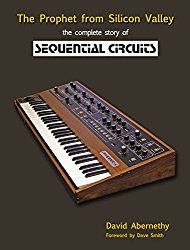
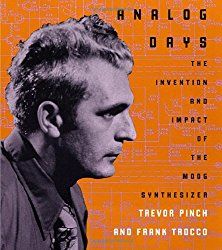
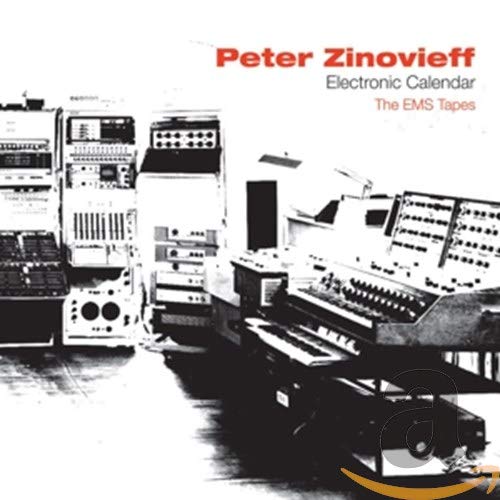
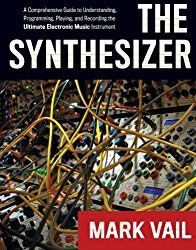

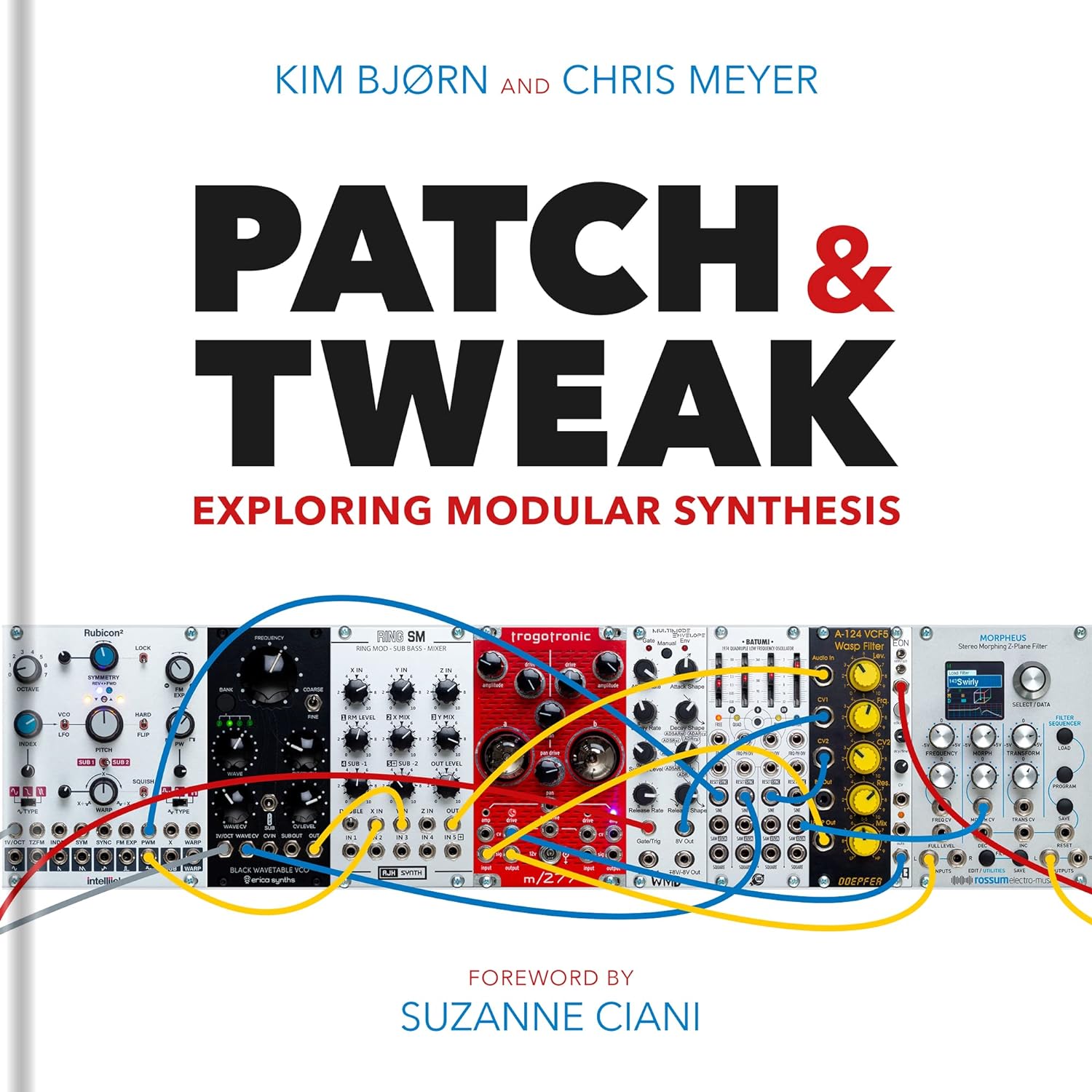
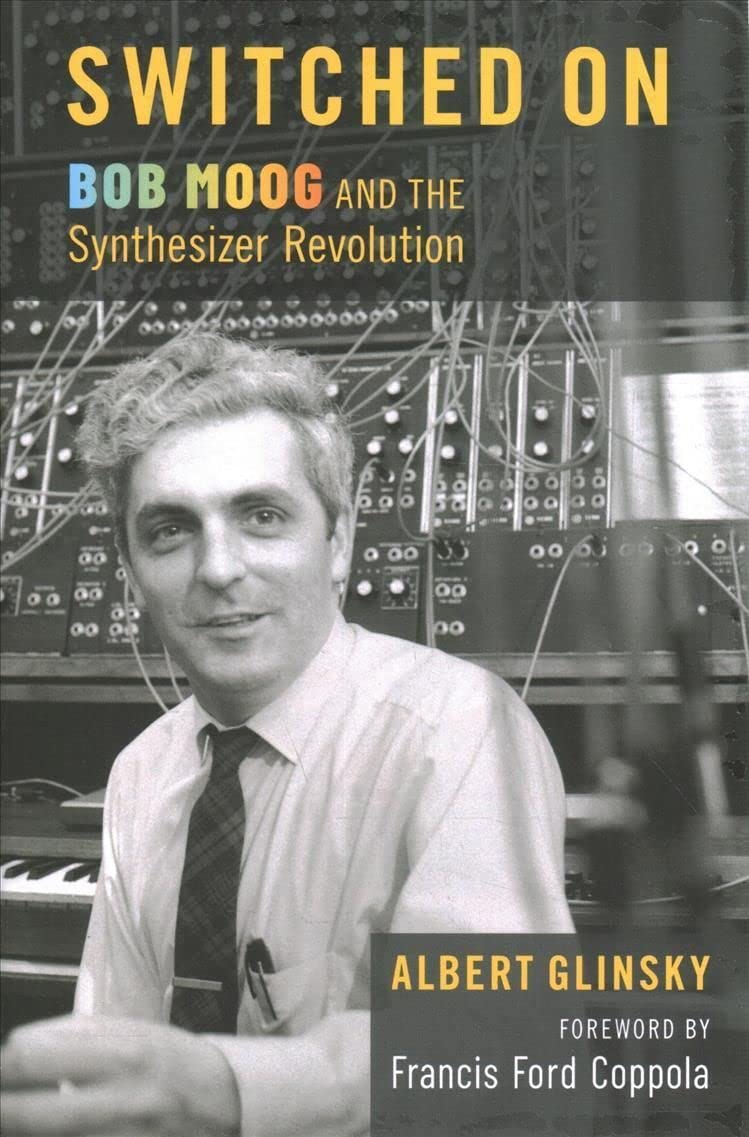
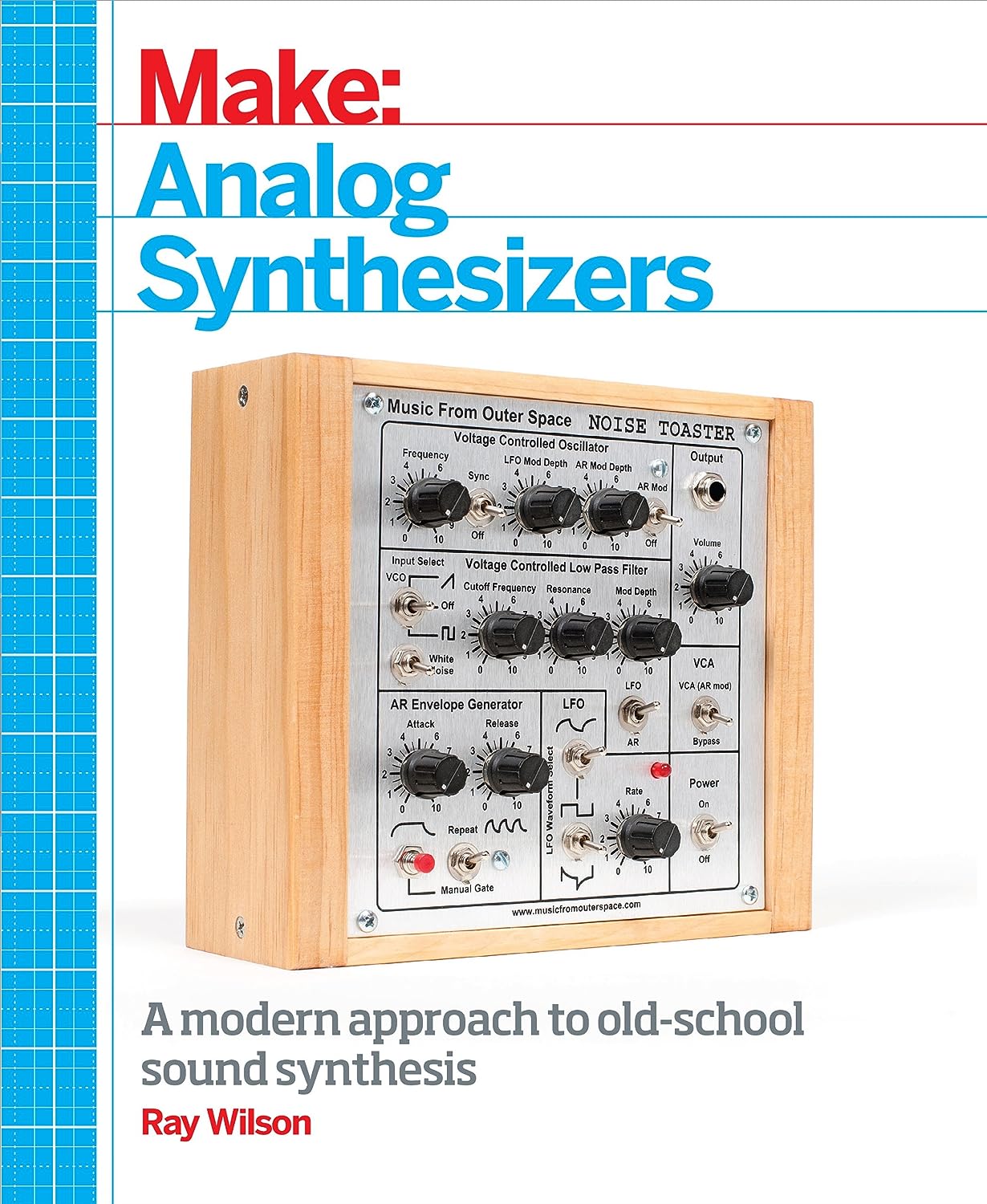
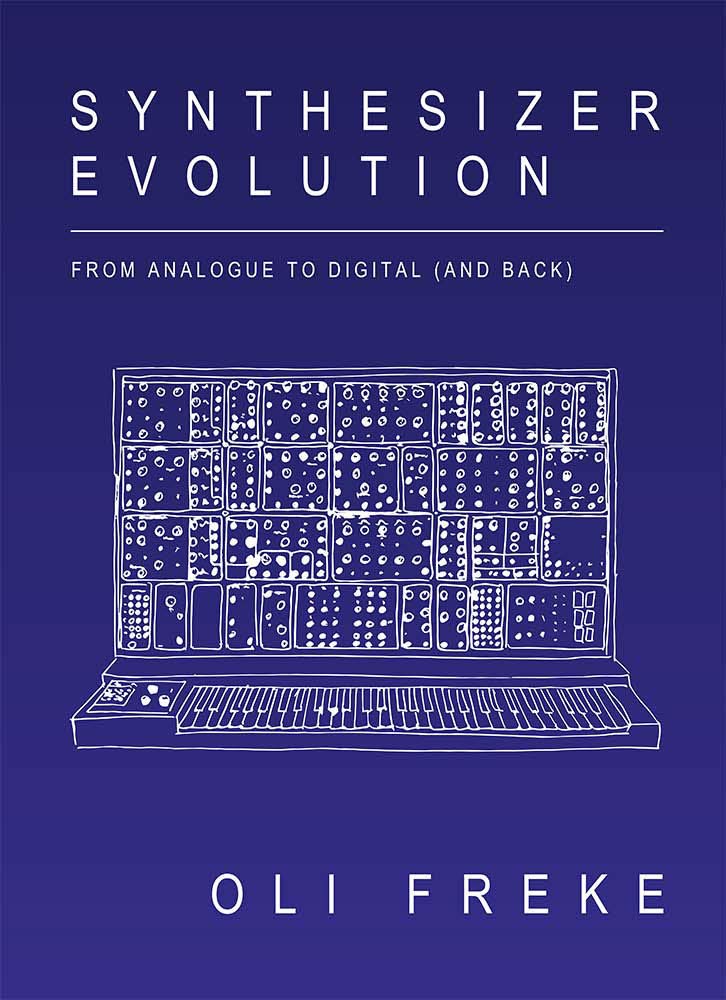

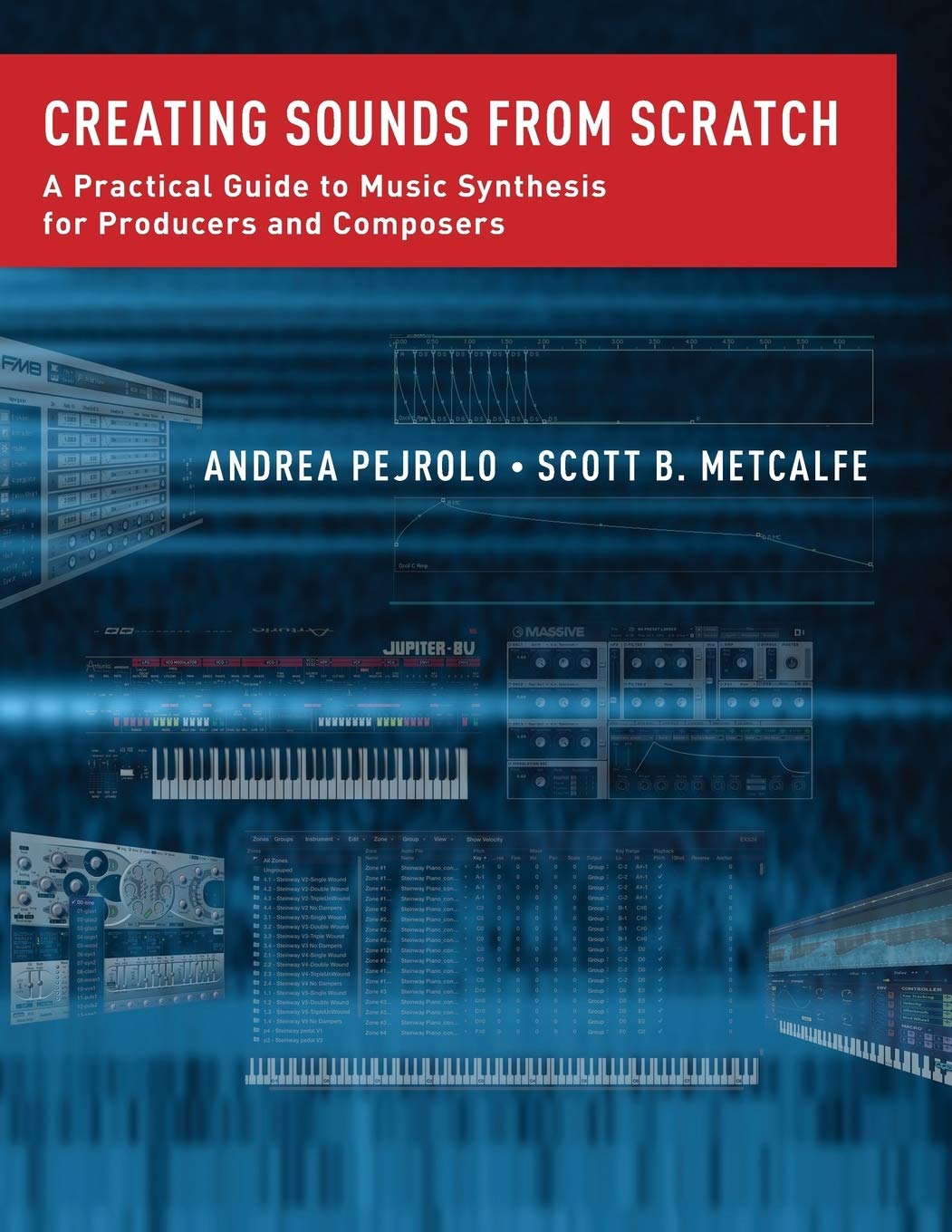


© Matrixsynth - All posts are presented here for informative, historical and educative purposes as applicable within fair use.
MATRIXSYNTH is supported by affiliate links that use cookies to track clickthroughs and sales. See the privacy policy for details.
MATRIXSYNTH - EVERYTHING SYNTH













© Matrixsynth - All posts are presented here for informative, historical and educative purposes as applicable within fair use.
MATRIXSYNTH is supported by affiliate links that use cookies to track clickthroughs and sales. See the privacy policy for details.
MATRIXSYNTH - EVERYTHING SYNTH





















